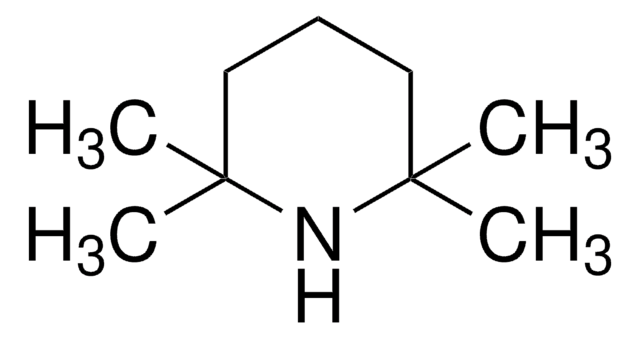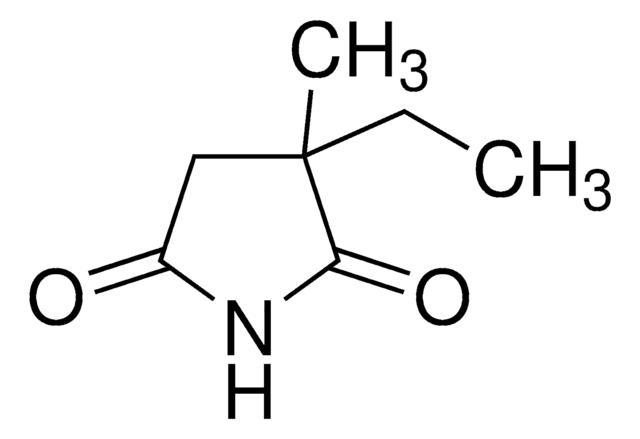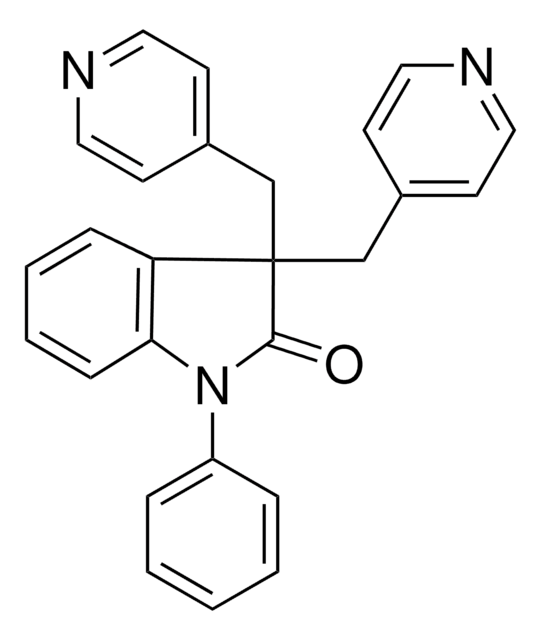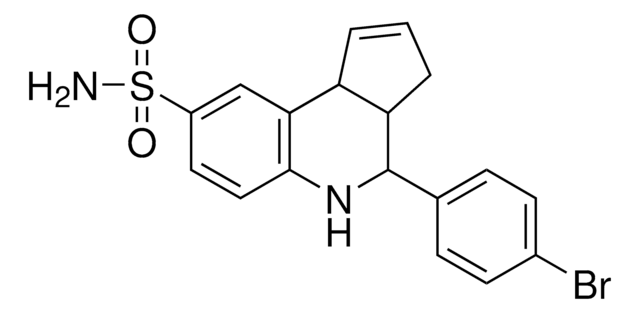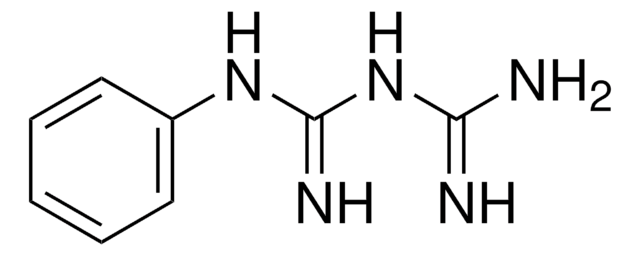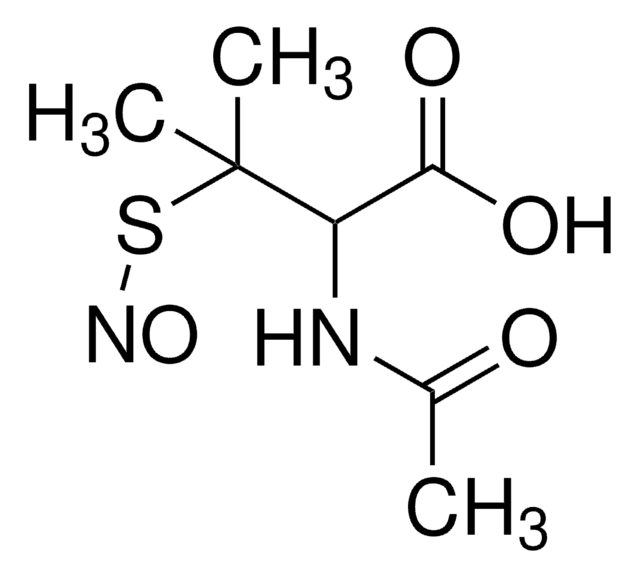Wichtige Dokumente
T5576
TMPH hydrochloride
solid, (Product is pure based on CHN, NMR and MS results)
Synonym(e):
2,2,6,6-Tetramethylpiperidin-4-yl heptanoate hydrochloride
About This Item
Empfohlene Produkte
Form
solid
Lagerbedingungen
under inert gas
Farbe
white
Löslichkeit
H2O: 22 mg/mL at ~60 °C
Lagertemp.
2-8°C
SMILES String
Cl.CCCCCCC(=O)OC1CC(C)(C)NC(C)(C)C1
InChI
1S/C16H31NO2.ClH/c1-6-7-8-9-10-14(18)19-13-11-15(2,3)17-16(4,5)12-13;/h13,17H,6-12H2,1-5H3;1H
InChIKey
XIDDVJIJIFWGIX-UHFFFAOYSA-N
Anwendung
Biochem./physiol. Wirkung
Leistungsmerkmale und Vorteile
Angaben zur Herstellung
Signalwort
Warning
H-Sätze
Gefahreneinstufungen
Eye Irrit. 2 - Skin Irrit. 2 - Skin Sens. 1 - STOT SE 3
Zielorgane
Respiratory system
Lagerklassenschlüssel
11 - Combustible Solids
WGK
WGK 3
Flammpunkt (°F)
Not applicable
Flammpunkt (°C)
Not applicable
Persönliche Schutzausrüstung
dust mask type N95 (US), Eyeshields, Faceshields, Gloves
Hier finden Sie alle aktuellen Versionen:
Analysenzertifikate (COA)
Die passende Version wird nicht angezeigt?
Wenn Sie eine bestimmte Version benötigen, können Sie anhand der Lot- oder Chargennummer nach einem spezifischen Zertifikat suchen.
Besitzen Sie dieses Produkt bereits?
In der Dokumentenbibliothek finden Sie die Dokumentation zu den Produkten, die Sie kürzlich erworben haben.
Artikel
Sigma-Aldrich offers many products related to nicotinic acetylcholine receptors for your research needs.
Unser Team von Wissenschaftlern verfügt über Erfahrung in allen Forschungsbereichen einschließlich Life Science, Materialwissenschaften, chemischer Synthese, Chromatographie, Analytik und vielen mehr..
Setzen Sie sich mit dem technischen Dienst in Verbindung.